uk-reviews
Latest

Google Home review: The Assistant steps into your living room
The Google Assistant was the big news from the company's I/O conference earlier this year, but it took months for Google's true Siri competitor to really arrive. First it was baked into the largely unnecessary Allo chat app, and then it showed up as a flagship feature on the new Pixel phones. Now Google Home is shipping, putting the Assistant a voice command away even when your phone is in your pocket. Its inspiration is obvious: The $129 Home directly takes on the Amazon Echo. Indeed, many of the features here are the same. But Google is betting that the vast amount of data it stores, combined with the vast amount of data it knows about its customers, can make for a more useful product. It's a reasonable notion, but Home isn't quite ready to deliver on the promise of "your own personal Google" just yet.

The bottom line: Our quick verdict on Google's Pixel and Pixel XL
What happens when Google designs its own phones, as Apple does with the iPhone? You get some of the best handsets money can buy, that's what. The 5-inch Pixel and 5.5-inch Pixel XL are well-built, with fast performance, excellent cameras and great screens (especially on the larger model). No product is perfect, though, and indeed, we've identified a few areas where Google can improve with the inevitable second generation. In particular, we were disappointed to see that these phones are less water resistant (and arguably less stylish) than other handsets you'd find in this price range. Speaking of the sort, these things are expensive, with starting prices of $649 and $769, respectively. That's on par with other flagships, but for the money, we don't want to see too many "cons" in those review cards you see below. Thankfully, the pros here vastly outweigh the few shortcomings, and both Pixel phones both earn our strong recommendation.

The bottom line: Our quick verdict on the ASUS ZenBook 3
ASUS's latest ultraportable the ZenBook 3 is often compared to Apple's 12-inch MacBook. And can you blame people? The laptop is even thinner and lighter than Apple's two-pound wonder, but just as fast and with longer battery life. And it comes with a mini dock in the box, adding precisely the sort of ports you'd be missing on the MacBook (and would only have access to if you paid extra for an adapter). On paper, then, it's precisely the computer Windows-using travelers have been looking for. Depending on your needs, that may still be the case, but in practice we found the ZenBook 3 isn't everything we hoped it would be. In particular, we found the keyboard and trackpad uncomfortable to use, and we had some concerns about the build quality too. It's possible you'll disagree with us there, but you owe it to yourself to get some hands-on time with the machine at a local store before buying, if at all possible.

The bottom line: Our quick verdict on the PlayStation VR
And then there were three. The PlayStation VR went on sale earlier this month, making it the third big-name tethered VR headset to arrive this year. Though it's less immersive than either the Oculus Rift or HTC Vive that came before it, the PSVR is compelling for an entirely different set of reasons. It's cheaper than the competition, for one, with a starting price of $400. Secondly, look at all the content available for it! The PSVR launched with 30 compatible games, and Sony promises that number will grow to 50 by year's end. And that includes some major franchises too, including Batman and Resident Evil. Not only are these games people will want to play, but the gear you need to experience them -- a PS4, PlayStation Camera and Sony's "Move" motion controllers -- are already in millions of homes. Equally important, the PSVR is comfortable to wear -- something we haven't been able to say about every headset we've tested. That's the bottom line, but if you're craving a little more, find our full review here.
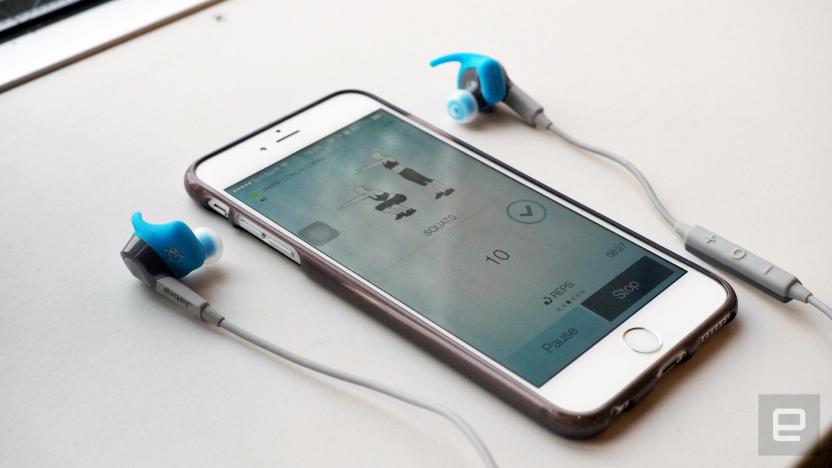
Jabra's Sport Coach headphones count my reps so I don't have to
Whenever I go to the gym, I immediately plug in my headphones. Last year, I graduated to wireless headphones, and while I'm happy with my current Bluetooth buds (more on those later), I was intrigued by Jabra's latest refresh of its Sports Coach series, which promises to gauge and coach not only your running (I don't do that), but also cross-training style bodyweight and dumbbell-based exercises, counting reps using built-in movement sensors so that you can concentrate on your form -- and then crank out even more.

Tesla unveils its solar roof and Powerwall 2
At Universal Studios in Los Angeles tonight, Tesla CEO Elon Musk showed off the company's solar roof-top panels, a new $5,500 Powerwall 2 high-capacity residential battery pack, and the Powerpack 2 for businesses.

The bottom line: Our quick verdict on the Lenovo Yoga Book
There's nothing quite like the Lenovo Yoga Book. It's a small, lightweight clamshell device running your choice of Android or Windows 10 as an OS. Take a tour of the hardware and you'll find a 360-degree hinge, a screen and, uh, no keyboard. That's right, instead of where the keyboard deck would be is a flat-touch sensitive surface that doubles as a digital notepad and sketchpad. It works as a keyboard too, except the buttons, as it were, are all virtual, ready to disappear when you're done using them. The design is nothing if not inventive, and Lenovo deserves credit for that, but it's almost ahead of its time. That or just not very well executed. While digital artists might enjoy the doodling features, our reviewer was never able to master the keyboard. Even when she learned to type accurately, she could never do so quickly. And that's a problem for a $500-plus device designed for being productive on the go. For that, you may as well buy, you know, a laptop.
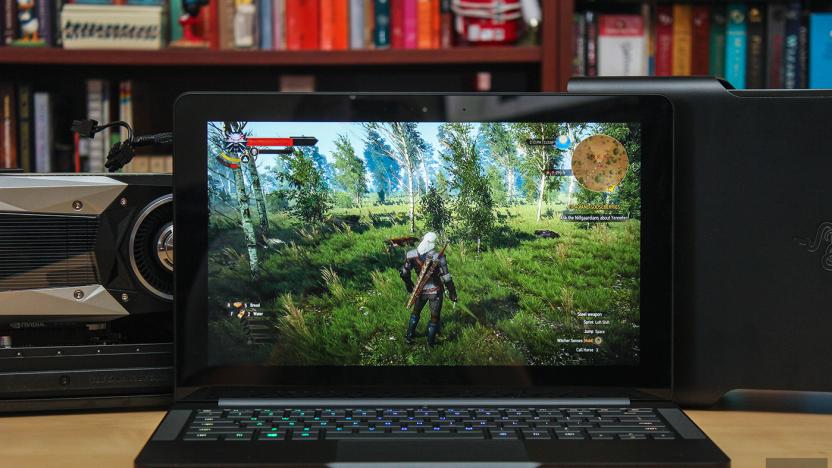
Razer's Blade Stealth and 'Core' add up to the gaming laptop I always wanted
For as long as I can remember, I've dreamed of a computer that didn't exist: something that could get me through the work day but also transform into a gaming powerhouse at home. It's taken decades, but that old fantasy is finally starting to coalesce into reality. Laptops from Alienware and MSI can be bought with an external graphics dock that lends them the power of a desktop-class GPU. Earlier this year, Razer even made a bid for my dream laptop -- but its Blade Stealth stumbled with middling battery life and by launching before its companion GPU dock hit the market. Recently the company updated the ultraportable with more storage and memory, a faster processor, a higher-capacity battery and the graphics extender that makes it so special: the Razer Core. Now that we finally have the complete package, it's time to revisit the Stealth and see if it makes good on its promise.
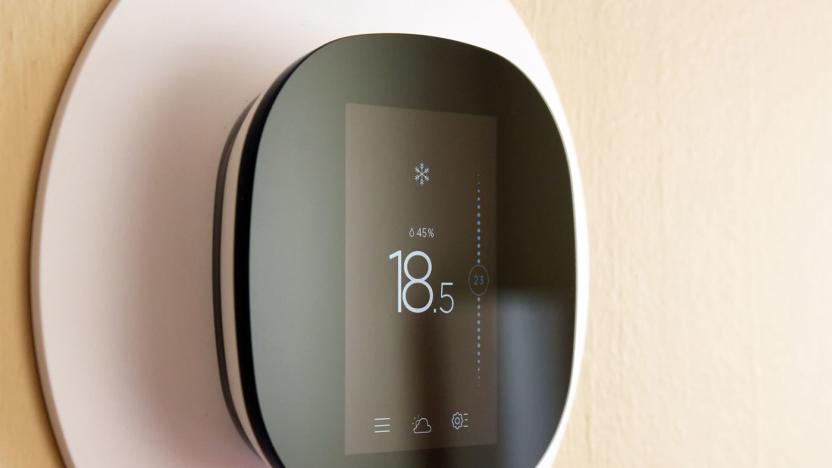
The Ecobee3 Lite is a decent smart thermostat that costs less than most
Most thermostat makers now have at least a single entry in the smart-home category, with some already on their second- and even third-gen products. All are vying to provide consumers with smarter, simpler controls for home heating and cooling. The new Ecobee3 Lite isn't the company's first such device, but it does mark the brand's attempt to hit a much lower price point. With a $169 MSRP, it costs $80 less than the original Ecobee3 as well as the Nest, and is $30 less than the Honeywell Lyric. But in order for the company to hit that price and still keep the flagship model relevant, some features had to go.
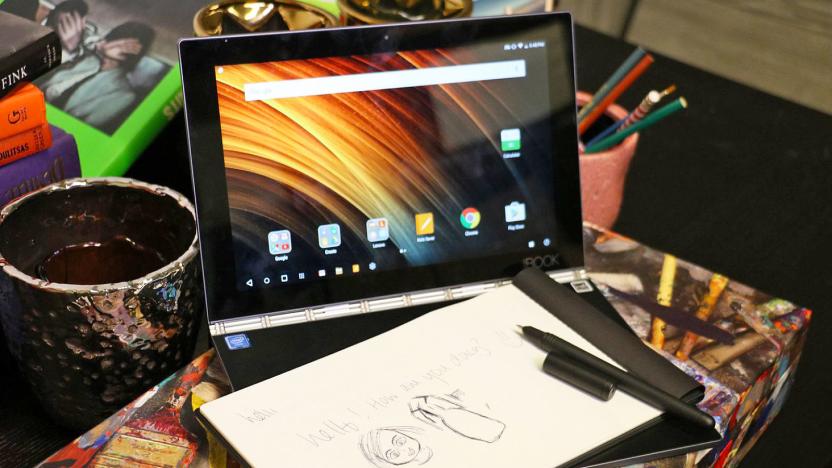
Lenovo's futuristic Yoga Book is a novelty item not worth buying yet
At a time when Apple, Microsoft and Google are pairing their new tablets with keyboards, Lenovo has done the unthinkable. It's completely ditched a true keyboard for a digital sketchpad, trading snappiness, travel and actuation for a smooth, futuristic touch surface. The idea is to offer a note-taking experience that's so effective you'd feel comfortable leaving the keyboard behind. The Lenovo Yoga Book, available in Android ($500) and Windows ($550) versions, is inventive. But Lenovo claims that the Yoga Book is the "ultimate tablet for productivity and creativity," and that's where the company is wrong. Despite plenty of well-intended enhancements, such as multi-window support in the Android model, Lenovo still failed to make device that truly facilitates productivity.

The sweet sound of the 'world's most expensive' earphones
I imagine I'm like most people in that I'm fairly content with a leaky pair of earphones that came bundled with a phone I bought 18 months ago. Some of you will have more expensive tastes, of course, dropping a few hundred on a "nice" pair of Beats, Sonys or similar cans. But there's a whole other world out there, where money is seemingly no object in the pursuit of the perfect sound. And for roughly a week, I've been masquerading as an audiophile myself, wearing oBravo's EAMT-1 in-ear headphones that cost no less than £3,600 (roughly $4,413). Yes, you read that right.

GoPro's Hero5 Black and Session bring overdue improvements
Recently, GoPro unveiled an entirely new product lineup. Not just the new Hero5 Black ($399) and Hero5 Session ($299), but also the Karma drone, a surprise hand-held gimbal -- known as the Karma Grip -- and a brand new cloud service called GoPro Plus. While it's going to be another week or so before we can get our hands on the Karma drone, I had a chance to spend some time with the new flagship Hero5 Black and its sidekick, the Hero5 Session. Both come with some exciting, long-awaited new features, which I'll lay out in detail below. With many of the upgrades addressing common pain points, it's clear that this year, GoPro was mainly focused on polishing the user experience.

Pebble 2 review: An affordable smartwatch with a fitness bent
Pebble is in a tough spot. Once a pioneer in smartwatches, it now has to fight off competition from brands like Apple and Samsung, as well as more affordable devices, even ones that feel more like fitness trackers. Earlier this year, the company unveiled a pair of smartwatches designed to occupy that middle ground. They are the Pebble 2 and the Pebble Time 2, both of which retain much of the same functionality as previous-gen Pebbles, but with one key difference: They now have built-in heart rate monitors. Combined with a revamped Health app, the Pebble line is much more fitness-focused than before. At $129, the Pebble 2 is the more affordable of the two, and it's aimed at those who want a no-frills smartwatch with some workout features. Think of it as a fitness tracker with basic smartwatch functionality thrown in -- and priced for people who don't want to spend "smartwatch money."

The bottom line: Our quick verdict on the Apple Watch Series 2
The Apple Watch Series 2 is what the company should have put out last year: It's faster than the original, with longer battery life, a more intuitive OS, brighter screen, built-in GPS and waterproof design. If this were Apple's only new smartwatch, we would have given it an even stronger recommendation than we actually did. The problem is, the company does indeed have another wearable on offer. The Series 1, as it's called, costs a hundred dollars less and is basically last year's model, upgraded with the same dual-core processor used in the Series 2. It, too, runs watchOS 3 out of the box. As an all-purpose smartwatch, then, the experience should be similar to what you'd get on the souped-up version. Meanwhile, though the GPS inside the Series 2 mostly matches readouts on other devices, the difference is often big enough to have big implications for estimated pace. That shouldn't be a big deal for walkers, but more serious athletes who train for events where speed matters won't want to give up their dedicated sports watches just yet. Given that, the Series 2 mostly makes sense for either swimmers or people who want distance tracking but don't care about accurate pace tracking (like we said: walkers, hikers and joggers). Everyone else, save yourself a hundred bucks and get the Series 1 instead.
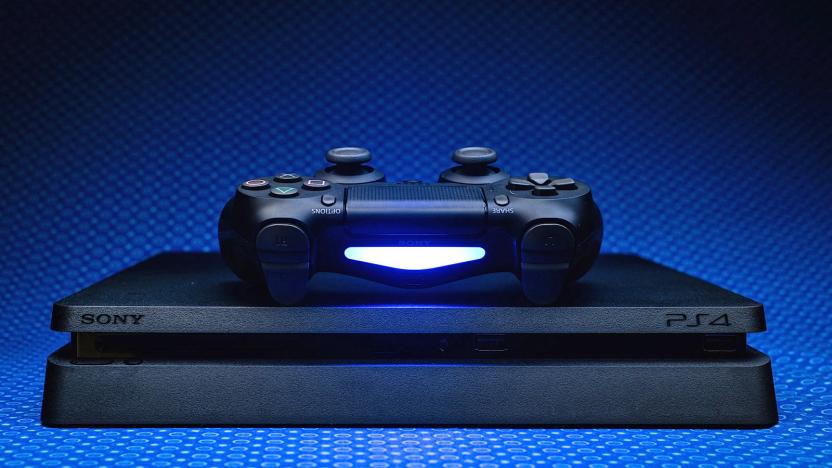
PlayStation 4 Slim review: Wait for the PS4 Pro if you can
After selling over 40 million consoles, Sony is refreshing the PlayStation 4. That starts with the PlayStation 4 Slim, available now for $299, along with the PlayStation VR headset (out next month) and the higher-powered PS4 Pro, which comes out in November. Sony has said that the PlayStation 4 Slim will become the new standard PS4, replacing the tried-and-true model that launched in 2013. So how does it compare?

Fender's FXA2 in-ear monitors sound great onstage and off
When you think "Fender," your brain conjures up images of guitars, of long-haired tattooed musicians exploding into ear-piercing solos. It's an appropriate assessment -- the Stratocaster (or one of its many clones) is usually the first instrument of aspiring rock gods. What you don't think about are earbuds. But after a recent acquisition, the guitar maker is hoping to change that with its line of in-ear monitors.

Apple Watch Series 2 review (as written by a marathoner)
When the Apple Watch first came out last year, Engadget published not one but two reviews. There was the "official" review, which provided an overview of the device's features and, more important, attempted to explain who, if anyone, should buy it. Then there was a piece I wrote, focusing specifically on the watch's capabilities (actually, drawbacks) as a running watch. Although we knew that many readers would be interested in that aspect of the device, we were wary of derailing the review by geeking out about marathoning. This year, we needn't worry about that. With the new Apple Watch Series 2, the company is explicitly positioning the device as a sports watch. In particular, the second generation brings a built-in GPS radio for more accurate distance tracking on runs, walks, hikes, bike rides and swims. Yes, swims: It's also waterproof this time, safe for submersion in up to 50 meters of water. Beyond that, the other changes are performance-related, including a faster chip, longer battery life and a major software update that makes the watch easier to use. Even so, the first-gen version, which will continue to be sold at a lower price, is getting upgraded with the same firmware and dual-core processor. That means, then, that the Series 2's distinguishing features are mostly about fitness. And if you don't fancy yourself an athlete, we can think of an even smarter buy.

The Fitbit Charge 2's upgrades are incremental, but necessary
Fitbit's 2-year-old Charge HR has been in dire need of an upgrade, and thankfully, the company has finally refreshed its lineup. The new Charge 2 boasts better exercise tracking, more informative stats, GPS capability and a larger screen for the same price ($150) as its predecessor. Although I dislike its still-boring looks and odd meditation mode, I've found the Charge 2 to be a solid fitness companion overall that spurred me to get better at monitoring and understanding my heart health. It's a worthy successor to our current favorite fitness tracker and takes over as the most well-rounded option you can buy.

macOS Sierra review: Mac users get a modest update this year
This is almost like part two of my macOS Sierra review. I had a chance to test Apple's newest desktop operating system at the beginning of the summer, just before it was released in a public beta. The software hasn't changed much since, but a few of the headline features were missing from that earlier build; Apple said they wouldn't be available until the final version shipped in the fall. As it happens, Sierra arrives today as a free upgrade, so I'm picking up right where I left off. What follows is my full review of Sierra, though if you read my earlier preview, or have been using the software yourself, you won't find many big surprises here.
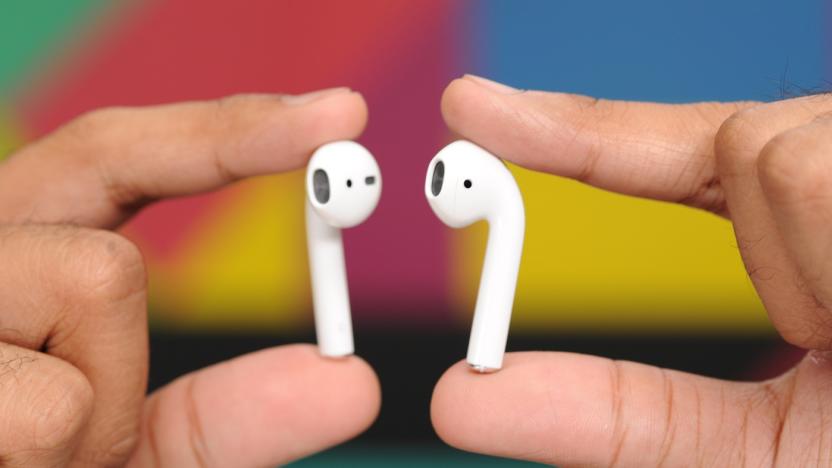
The bottom line: Our quick verdict on Apple's AirPods
The fact that they look like Q-tips sticking out of your ears is just the beginning: There are other reasons you might want to think twice about buying Apple's wireless, weird-looking AirPods. For the money -- $159 -- these earbuds offer audio quality that isn't any better than what you'd get with the iPhone's pack-in EarPods. We'd also like it if Apple allowed more flexibility with the controls. Right now, for instance, you need to use Siri or take out your phone if you want to do basic things like change tracks or adjust the volume. On the plus side, the earbuds are dead-simple to set up, and work well for voice calls and Siri requests, even if they're nothing special for music playback. Unless you're an early adopter, you're better off waiting for Apple to release a next-gen version and/or drop the price.











